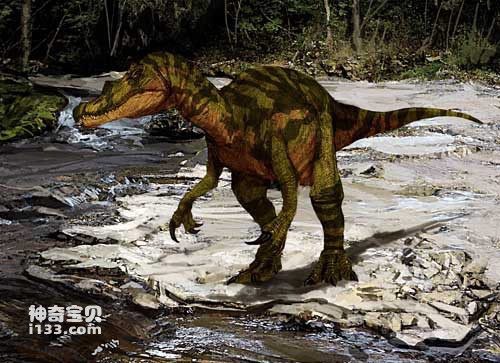In 1983, while searching for fossils in Surrey, southeast England, fossil hunter Walker discovered this large claw over 30 centimeters long in a dirty mud pit. The claw was sickle-shaped and the tip was as sharp as a dagger. There was an immediate media sensation, calling the big claw a "super giant claw". This was not only because it was the first carnivorous dinosaur discovered in the UK, but also because no dinosaur claws discovered before were this big. The tiny front claws of Tyrannosaurus Rex Not to mention, the second toe of Velociraptor was only 9 centimeters long, and the front claws of Allosaurus were only 15.2 centimeters long.
Subsequently, more Baryonyx fossils were discovered by an exploration team from London, England. In 1986, Milner and Gallug of the Natural History Museum in London named this new dinosaur "Baryonyx Vauxii". The genus name means solid claws, and the species name commemorates the excavator Walker.
In fact, the Baryonyx fossil discovered by Walker was a sub-adult, measuring 9.5 meters long and 2.5 meters high; paleontologists speculate that an adult Baryonyx should be 12 meters long. Its head is flat and long, its hind limbs are strong, its body is low, its tail is very long to facilitate balance, its forelimbs are strong, and it has three powerful fingers, especially its thumb with super large claws. However, compared with other carnivorous dinosaurs, such as Tyrannosaurus, Allosaurus, etc., the neck of Baryonyx is very straight, not S-shaped like most carnivorous dinosaurs.
Although we know very little about the feeding habits of most dinosaurs, Baryonyx is definitely an exception. Judging from the unique design of its mouth and teeth, it will not actively attack healthy herbivorous dinosaurs that are more than 9 meters long. For example, the Iguanodon lived in the same era as it. Although Baryonyx's large claws could kill herbivorous dinosaurs, its conical teeth were not in the shape of beef knives like those of other carnivorous dinosaurs, which made it difficult for Baryonyx to tear off pieces of meat from other dinosaurs. . Judging from the above analysis, Baryonyx is not suitable for the role of a predator, but it will eat dead dinosaurs, as evidenced by small Iguanodon bone fragments found in the stomach of Baryonyx. What was the staple food of Baryonyx? Looking closely at the teeth and upper and lower jaws of Baryonyx, we will find that it is very similar to crocodiles, so it is very likely that it lived near the water and used its terrifying claws to hunt fish. Later, paleontologists discovered a large number of fish scales and fish bone remains in the stomach of Baryonyx, which basically established our speculation: this was a dinosaur that fed on fish as its main food and carrion as its supplementary food.

Chinese name: Baryonyx
Latin name: Baryonyx
Age of survival: Early Cretaceous
Fossil origin: UK
Physical characteristics: 9.5 to 12 meters long
Diet: Carnivorous
Type: Theropod
Definition: Heavy claws
animal tags: Baryonyx
We created this article in conjunction with AI technology, then made sure it was fact-checked and edited by a Animals Top editor.